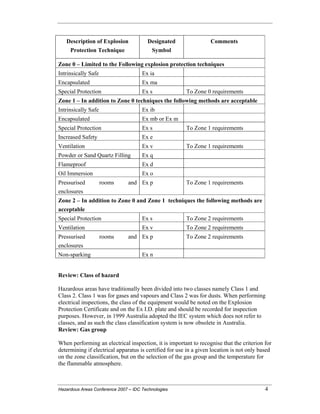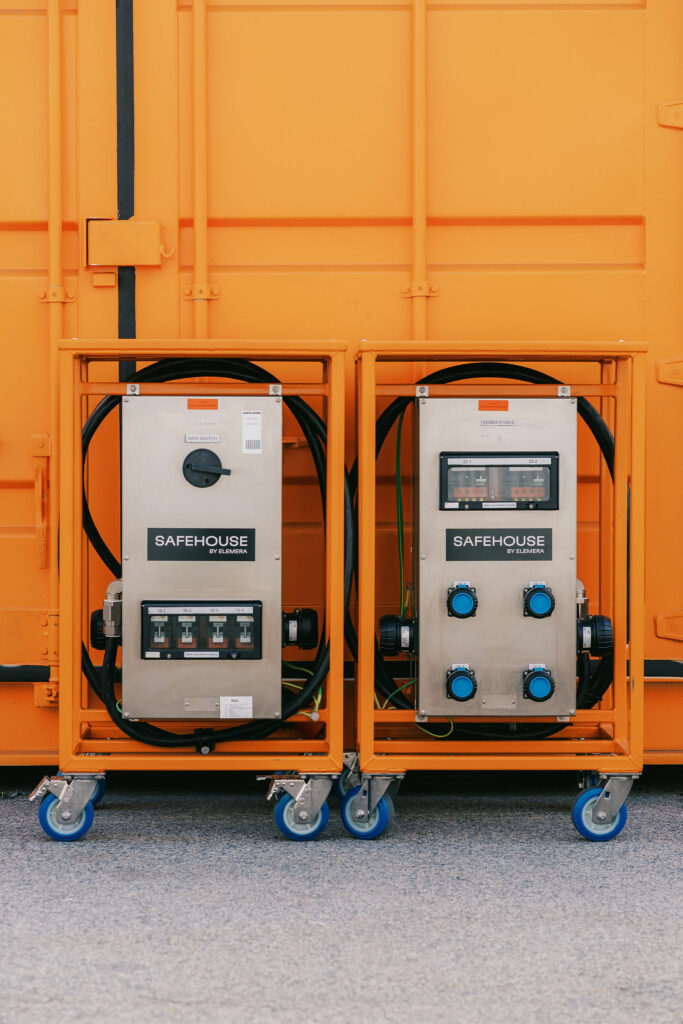Examine This Report about Roar Solutions
Examine This Report about Roar Solutions
Blog Article
Rumored Buzz on Roar Solutions
Table of ContentsThe Greatest Guide To Roar SolutionsOur Roar Solutions PDFsUnknown Facts About Roar Solutions
In order to protect installments from a possible surge an approach of evaluating and identifying a potentially dangerous area is needed. The purpose of this is to make certain the correct selection and installment of tools to inevitably avoid an explosion and to ensure safety of life.
(https://www.startus.cc/company/roar-solutions)
No equipment needs to be installed where the surface temperature of the devices is above the ignition temperature level of the offered danger. Below are some usual dust unsafe and their minimum ignition temperature level. Coal Dust 380C 225C Polythene 420C (thaws) Methyl Cellulose 420C 320C Starch 460C 435C Flour 490C 340C Sugar 490C 460C Grain Dirt 510C 300C Phenolic Material 530C > 450C Aluminium 590C > 450C PVC 700C > 450C Soot 810C 570C The chance of the danger being existing in a concentration high adequate to trigger an ignition will certainly vary from location to place.
In order to classify this danger an installation is separated into areas of risk depending upon the amount of time the hazardous exists. These areas are referred to as Areas. For gases and vapours and dirts and fibres there are 3 areas. Zone 0 Area 20 An unsafe atmosphere is highly most likely to be present and might exist for long durations of time (> 1000 hours per year) and even continually Area 1 Area 21 An unsafe environment is possible yet not likely to be present for extended periods of time (> 10 450 C [842 F] A classification of T6 means the minimal ignition temperature is > 85 C [185 F] Unsafe location electric tools perhaps developed for usage in greater ambient temperatures. This would indicated on the ranking plate e.g. EExe II C T3 Ta + 60C( This indicates at 60C ambient T3 will certainly not be gone beyond) T1 T1, T2, T3, T4, T5, T6 T2 T2, T3, T4, T5, T6 T3 T3, T4, T5, T6 T4 T4, T5, T6 T5 T5, T6 T6 T6 A T Class ranking of T1 implies the maximum surface temperature produced by the instrument at 40 C is 450 C. Thinking the linked T Class and Temperature level score for the devices are proper for the area, you can always use an instrument with an extra stringent Department rating than needed for the location. There isn't a clear response to this inquiry regrettably. It truly does rely on the kind of equipment and what repairs require to be accomplished. Tools with certain examination procedures that can't be done in the area in order to achieve/maintain 3rd party score. Have to come back to the manufacturing facility if it is before the equipment's service. Field Fixing By Authorised Personnel: Challenging screening might not be required nonetheless certain procedures may require to be followed in order for the tools to maintain its 3rd event ranking. Authorised personnel need to be used to carry out the job correctly Repair need to be a like for like substitute. New component need to be taken into consideration as a straight substitute requiring no unique testing of the devices after the repair is total. Each item of equipment with a harmful ranking ought to be evaluated individually. These are described at a high degree listed below, yet for even more detailed info, please refer straight to the standards.
Some Of Roar Solutions
The tools register is a comprehensive database of tools documents that consists of a minimum set of areas to recognize each product's place, technological criteria, Ex lover classification, age, and ecological data. This information is vital for monitoring and taking care of the devices effectively within harmful areas. On the other hand, for periodic or RBI tasting inspections, the grade will be a mix of Detailed and Close inspections. The proportion of Thorough to Shut assessments will certainly be figured out by the Tools Threat, which is assessed based on ignition danger (the possibility of a resource of ignition versus the possibility of a flammable atmosphere )and the hazardous area category
( Area 0, 1, or 2). This variation will also influence the resourcing requirements for work prep work. Once Whole lots are defined, you can create tasting strategies based on the example size of each Great deal, which refers to the variety of random equipment items to be examined. To determine the called for example size, 2 aspects need to be reviewed: the dimension of the Great deal and the group of inspection, which shows the level of initiative that should be applied( decreased, regular, or boosted )to the evaluation of the Whole lot. By incorporating the classification of examination with the Whole lot size, you can then develop the proper rejection requirements for an example, meaning the permitted variety of faulty products discovered within that example. For more details on this procedure, please refer to the Energy Institute Guidelines. The IEC 60079 basic recommends that the optimum interval in between inspections must not exceed three years. EEHA evaluations will certainly also be carried out beyond RBI campaigns as part of arranged maintenance and tools overhauls or repair work. These inspections can be attributed towards the RBI example sizes within the impacted Great deals. EEHA evaluations are conducted to identify mistakes in electric devices. A weighted scoring system is vital, as a solitary tool might have numerous faults, each with differing degrees of ignition threat. If the consolidated rating of both evaluations is much less than twice the fault score, the Great deal is deemed acceptable. If the Great deal is still taken into consideration inappropriate, it should undertake a complete inspection or validation, which may set off more stringent examination procedures. Accepted Great deal: The sources of any kind of mistakes are determined. If a typical failing setting is located, extra devices might require examination and repair. Faults are classified by severity( Safety and security, Integrity, House cleaning ), ensuring that urgent concerns are examined and addressed quickly to reduce any kind of effect on security or operations. The EEHA data source must track and videotape the lifecycle of mistakes together with the rehabilitative actions taken. Carrying out a robust Risk-Based Assessment( RBI )strategy is essential for making sure compliance and safety and security in managing Electric Tools in Hazardous Locations( EEHA) (high voltage courses). Automated Fault Scoring and Lifecycle Administration: Effortlessly take care of mistakes and track their lifecycle to boost examination accuracy. The introduction of this support for risk-based evaluation better reinforces Inspectivity's placement as a best-in-class remedy for regulative conformity, in addition to for any asset-centric examination usage case. If you are interested in discovering more, we invite you to ask for a demonstration and find just how our solution can change your EEHA monitoring procedures.
Roar Solutions for Dummies

In terms of eruptive danger, a dangerous location is an environment in which an explosive atmosphere exists (or might be reference expected to be present) in amounts that require special preventative measures for the building, setup and use equipment. Roar Solutions. In this post we explore the difficulties dealt with in the office, the threat control procedures, and the required expertises to function safely
It is a repercussion of contemporary life that we make, store or take care of a range of gases or liquids that are regarded flammable, and a series of dusts that are regarded combustible. These substances can, in particular conditions, develop eruptive ambiences and these can have significant and tragic repercussions. A lot of us recognize with the fire triangular remove any among the three elements and the fire can not take place, however what does this mean in the context of unsafe locations? When breaking this down right into its simplest terms it is essentially: a mix of a certain quantity of release or leak of a certain compound or material, mixing with ambient oxygen, and the visibility of a source of ignition.
In most instances, we can do little regarding the levels of oxygen in the air, yet we can have substantial influence on resources of ignition, as an example electric tools. Unsafe locations are documented on the dangerous area classification drawing and are determined on-site by the triangular "EX-SPOUSE" sign. Below, amongst various other crucial information, zones are split right into 3 types relying on the threat, the chance and period that an eruptive environment will exist; Zone 0 or 20 is considered the most hazardous and Area 2 or 22 is regarded the least.
Report this page